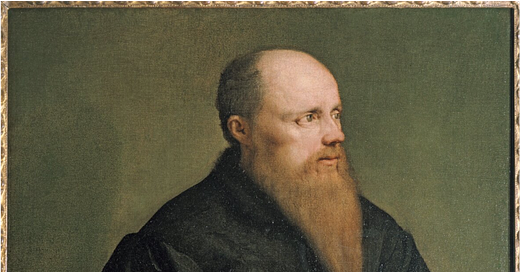
The Seven Characteristics of a Classically Educated Christian
Chapter Two: Untitled Primer on Classical Christian Education
I’m currently revising the second draft of a short seven-chapter primer on Classical Christian Education and would like to invite you into the process by sharing this “work in progress” publicly. Please share your feedback and help me title the book by offering your suggestions in the comments.
CHAPTER TWO (Pt. 1)
The Seven Characteristics of a Classically Educated Christian
In the last chapter, we discussed the idea of paideia and how the Greek’s approach to education referred to the holistic formation of a human being—intellectual, moral, and spiritual. And how, unlike modern education, paideia is interested in shaping not just what students know, but who those students become.
That raises two important questions: What is Classical Christian Education? And, more precisely, what kind of person should a Classical Christian Education produce. In other words, specifically, what kind of student does Classical Christian Education aim to cultivate?
First things first. The expression, Classical Christian Education (CCE), expresses itself under a fairly broad tent of thought, so there are likely as many micro-persuasions as there are eyes on Argos. This is true for at least three reasons.
The first reason has to do with that fact that what we call CCE today has looked differently in various epochs of history. Depending on who is answering the question, “What is Classical Christian Education?,” one may get a slightly different answer. For example, are we focusing on classical education in the golden age of Greece, the Roman artes liberales, or classical education as it functioned prior to or during the Scholastic period? Further, there are also distinctions between the Renaissance or Neoclassical periods, the modern period of classical Christian renewal that began in the early 1980s, and what some are now calling Christian Classical Education.
The second reason is that during this modern age of recovering CCE, educators have continued to grow in their understanding of what this pedagogical renaissance really is. For example, in The Liberal Arts Tradition, written by Kevin Clark and Ravi Jain, the authors suggest there have been four periods of growth just in the modern Classical Christian Education movement.
The third reason is directly related to the first two. As understanding has grown about what CCE has been and how it was implemented in ages past, so have opinions about which historical expression is most important to recover in the modern world (i.e., do students in the modern world still need to study Latin to be classically educated? Wouldn’t studying modern languages do just as well?) Also, where does the study of subsidiary sciences, like biology and ecology, fit into CCE?
In a nutshell, while CCE is a historic tradition of education that stands in opposition to the modern progressivists’ pedagogy and agenda, we have to get comfortable with the fact that the tradition is mildly dynamic, developing over more than two millennia of Western civilization. Because of what has been noted in these prefatory remarks, this author takes the position that a truly Classical Christian Education is one that strives to glean the best of Western liberal education in every epoch.
Now for the second question: What distinct virtues, habits, and dispositions should we hope to see manifest in our students if we educate them in the best expressions of CCE?
The negative answer is that the goal of CCE is not simply to raise up a young man or woman who can recite Latin declensions, analyze a syllogism, or know the titles of and characters in the greatest literature in the Western tradition—albeit those skills certainly have their place.
Stated positively, the specific aim of CCE is the formation of a mature person who, under the lordship of Christ, knows what is true, loves what is good, and delights in what is beautiful.
Therefore in this chapter, we will explore seven defining characteristics that emerge from the Classical Christian tradition. These traits describe not only the intended outcomes of such an education but also the posture and practices that students—and, by extension, the parents and teachers guiding them—should embody.
To those with modern sensibilities, the use of should in the last sentence may seem pretentious—and without humility it might be—but this is because the classical mind acknowledges norms and strives for that which is noble in both nature and history.
To be sure, the noble traits of a classically educated person do not emerge overnight; rather, they are cultivated through years of careful instruction, personal mentorship, and the steady nourishment of the mind and soul. Thus, the following noble characteristics serve as both the fruit and the aim of a rightly ordered Classical Christian Education.
2.1 A Worldview Anchored in Christianity
2.2 A Humanized Vision of Freedom and Liberty
2.3 A Foundation in the Seven Liberal Arts
2.4 Conversant in the Great Conversation
2.5 Some Proficiency in the Classical Languages
2.6 A Mastery of Rhetoric and Letters
2.7 A Personal Pursuit of Virtue and Wisdom





